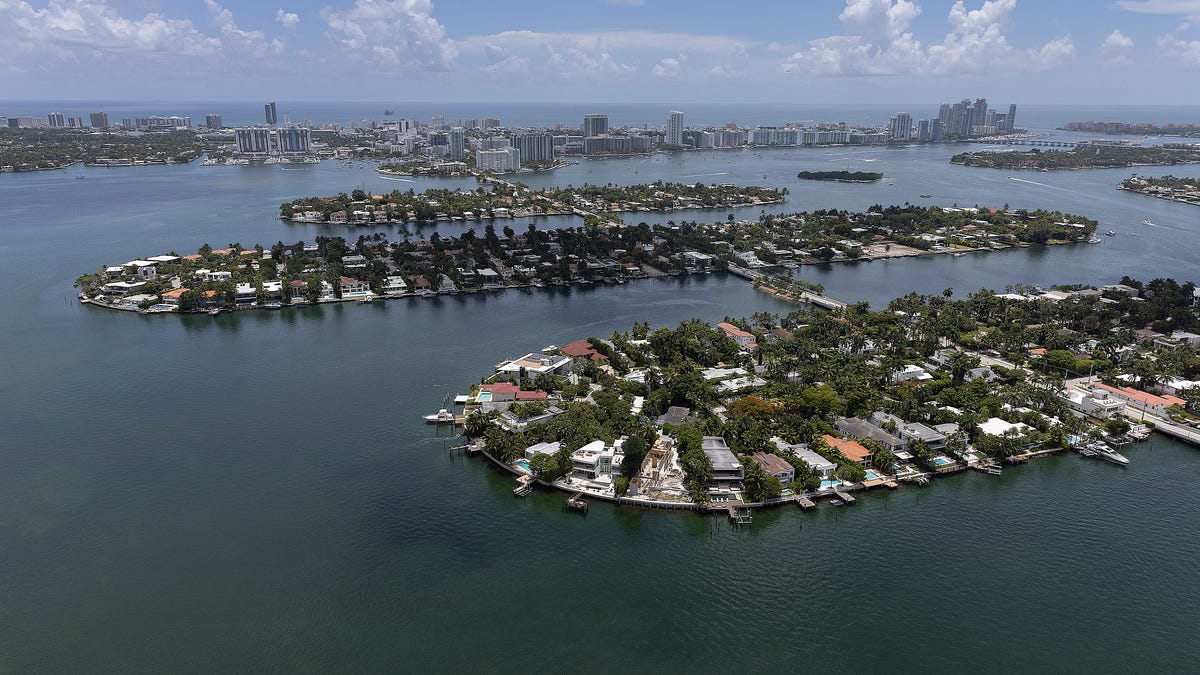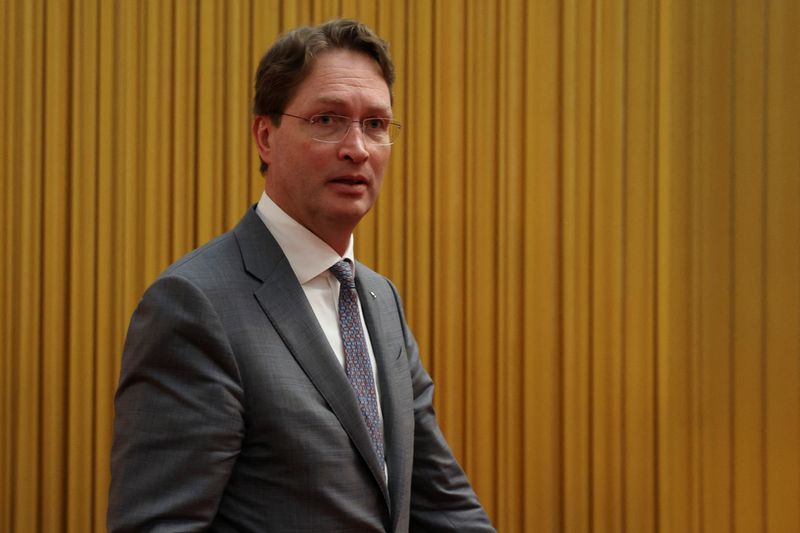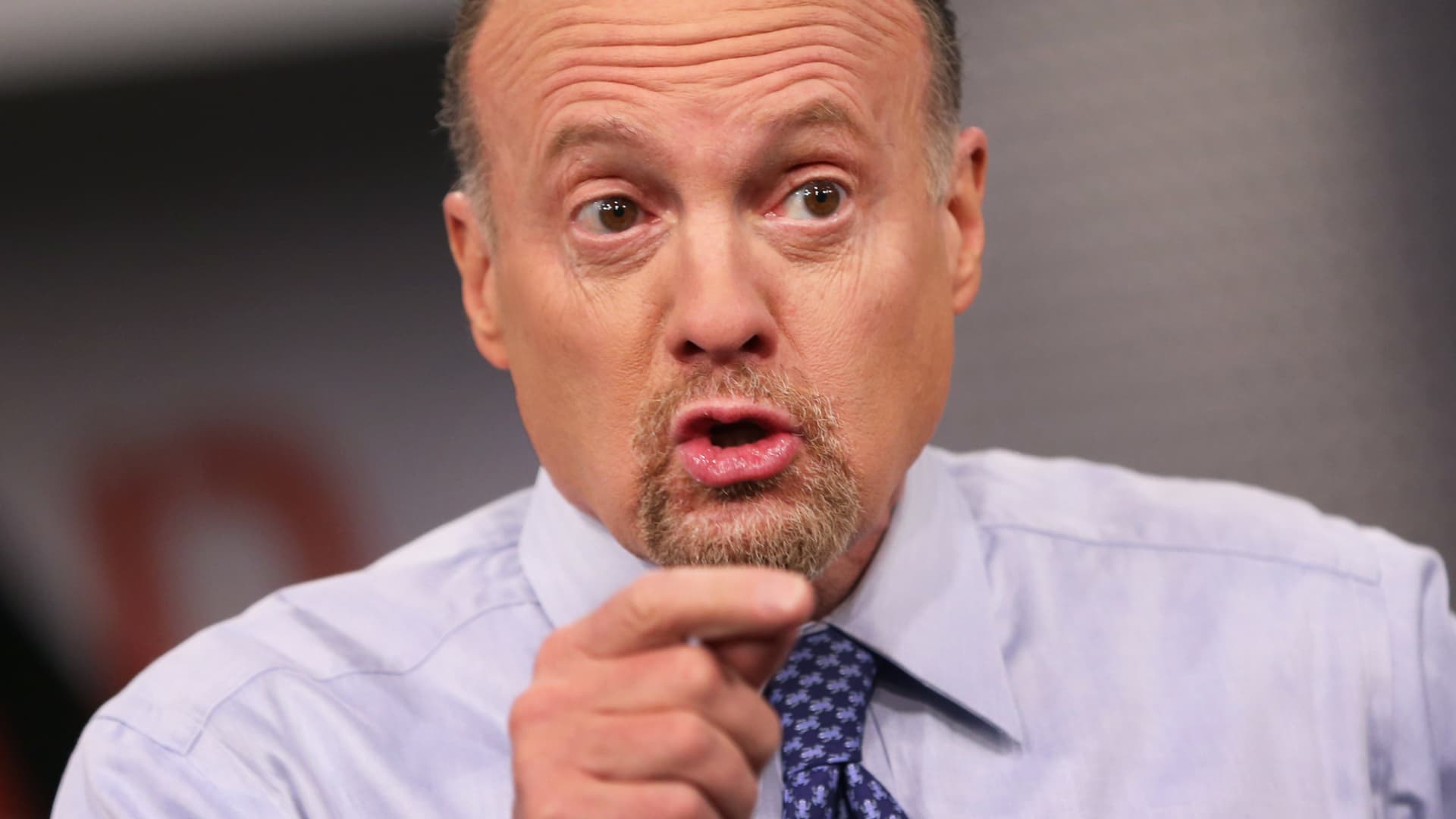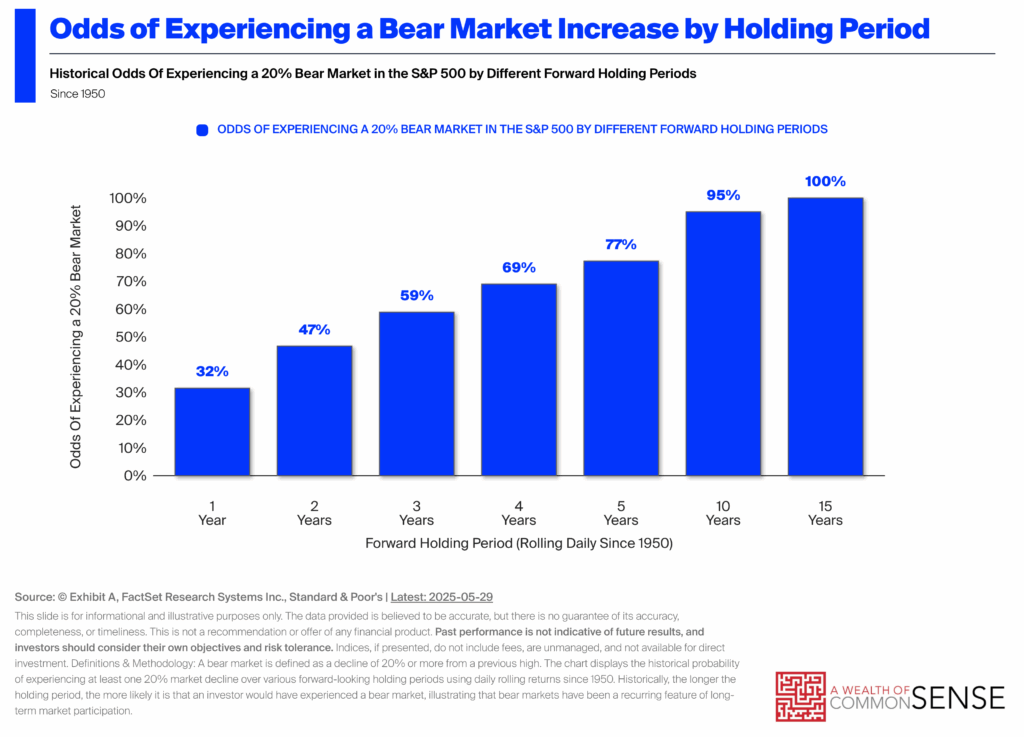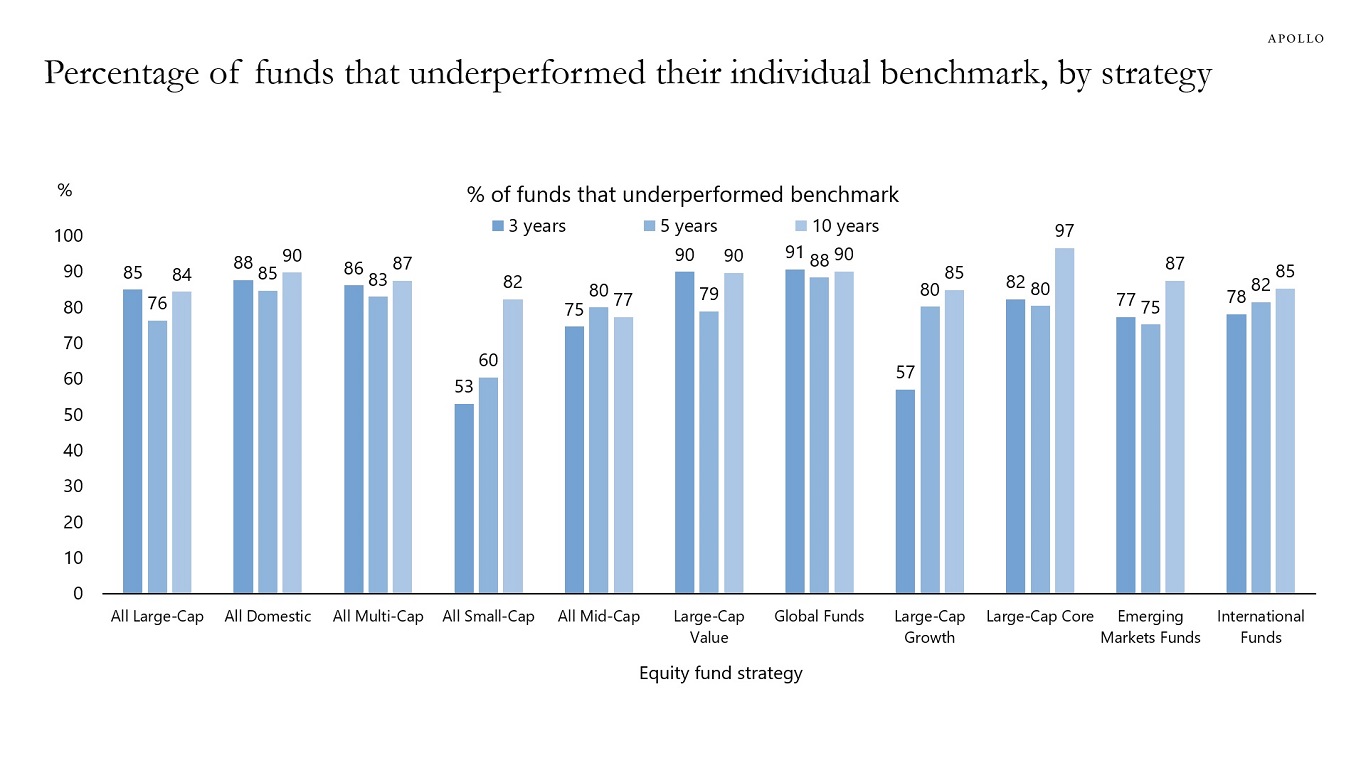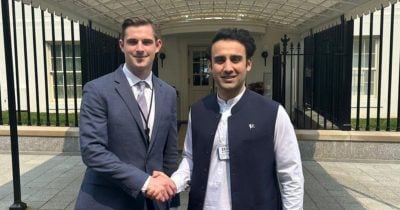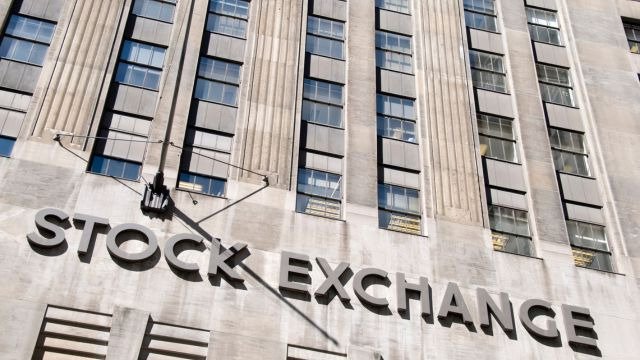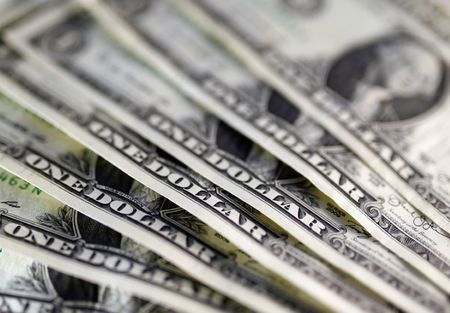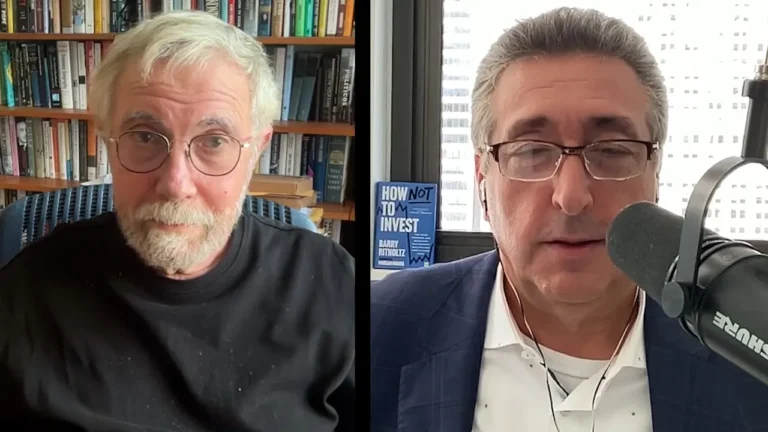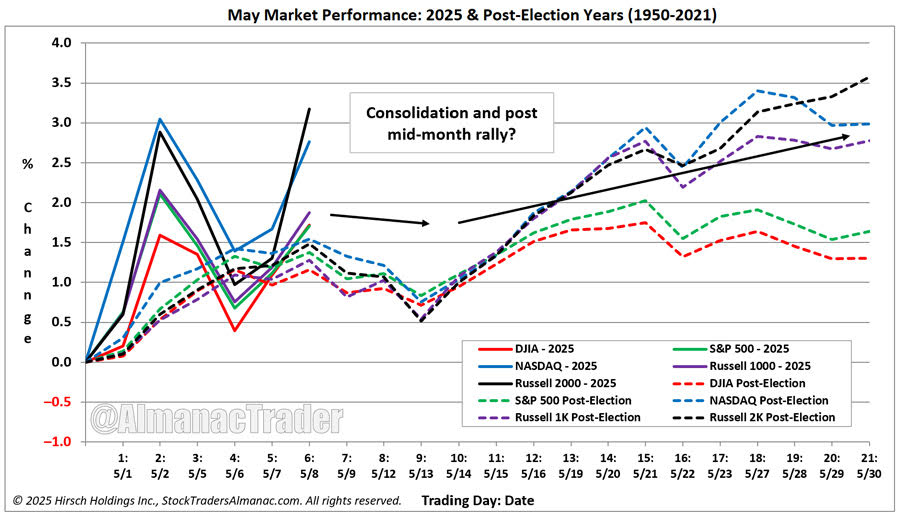A Historic Missed Opportunity
I’m on the road visiting our new office in Chicago and then heading to meet clients in San Francisco. However, after hearing some misinformation on TV from the usual suspects, I felt compelled to remind people of some key facts about the US debt and deficits. For a period of ~20 years, beginning… Read More The post A Historic Missed Opportunity appeared first on The Big Picture.
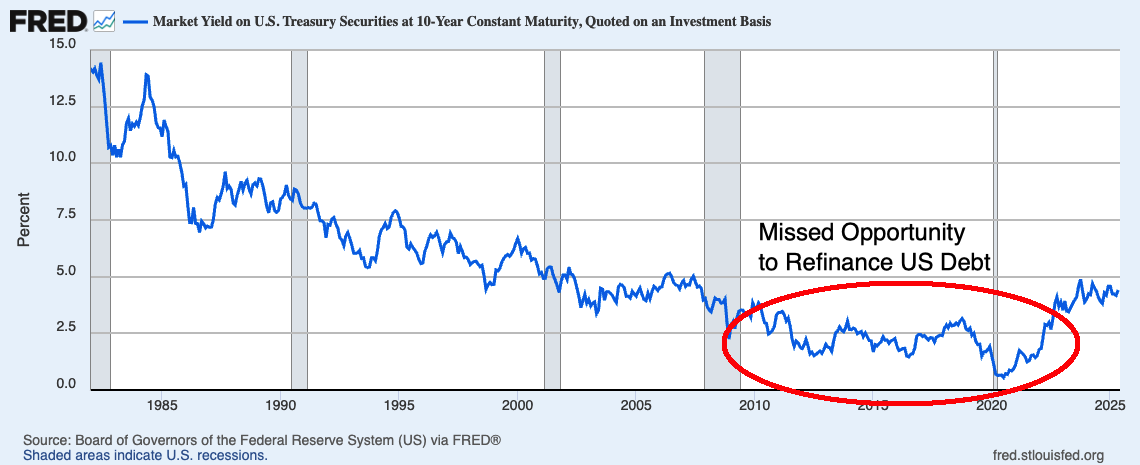
I’m on the road visiting our new office in Chicago and then heading to meet clients in San Francisco. However, after hearing some misinformation on TV from the usual suspects, I felt compelled to remind people of some key facts about the US debt and deficits.
For a period of ~20 years, beginning after the September 11th attack, accelerating after the GFC, and running up until the 2022 rate hikes, the United States enjoyed incredibly low interest rates.
Every rational party refinanced its debt, whether it was short, medium, or long term. This includes homeowners, many of whom still enjoy the lowest average mortgage rates on record, having locked in sub-5% and even sub-4% or 3% rates. It also includes Corporate America, which cheaply refinanced its long-term debt.
Indeed, it includes everybody in America save one entity: America itself.
With the 10-year treasury bond near 4.5% (and mortgages near 7%) the dollar being shunned by global trading partners, and U.S. bond market sending ominous warnings, you may be wondering why America the country didn’t do what America’s households and companies did in the 2010s: Refinance all of its outstanding debt cheaply.
Some of you are going to immediately cry “hindsight bias.” To you, I share the following columns written in the mid-2010s:
2013:
Thanks to the Federal Reserve’s zero interest rates and quantitative easing policies, borrowing costs are near generational lows. The costs of funding the repair and renovation of America’s decaying infrastructure are as cheap as they have been since World War II.
But the era of cheap credit may be nearing its end. And thanks to a dysfunctional Washington, D.C., we are on the verge of missing a once-in-a-lifetime opportunity.
2014:
Even with the U.S.’s huge funding needs, interest rates headed lower. The hunger for U.S. Treasuries remains unsated, so much so that today we seem to be facing a shortage of long bonds.
Here is a simple equation: Demand for Treasuries + ultra-low rates + big and persistent U.S. funding needs = the long bond.
If we were smart — and all indications are that as a nation, we’re not especially astute in our financial decisions — we would introduce a 50-year Treasury bond. Other nations have done so, most recently Canada.
2015:
Every once in a while, there is a way to resolve a host of problems that is so obvious it gets overlooked.
There is a single solution to all of them: Issue more long bonds, preferably 30- or 50- year securities.
A lot of what ails the U.S. can be fixed by refinancing debt at today’s low rates and issuing new bonds to finance repairs of crumbling infrastructure.
2016:
Regardless of the nation in question, the appropriate approach to financing this debt suggests a long-term bond — whether with a 30-year or even 50-year maturity.
What country does the above describe? It could be any of the following:
Canada
Spain
France
Switzerland
Britain
Italy
Ireland
Belgium
Mexico
All of them now finance some portion of their debt with 50-year bonds; Ireland and Belgium are even offering 100-year bonds, as is Mexico. And 100-year mortgages have been around in Japan since the 1990s. More and more companies have been issuing 100-year bonds as well.
All of this was obvious to anyone paying attention. There should have been a bipartisan recognition of this obvious financing opportunity, but alas, as Twain so aptly noted: “Suppose you were an idiot. And suppose you were a member of Congress. But I repeat myself.”
A once-in-a-lifetime opportunity to put America on the soundest financial footing possible was missed. Whether it was ideology, economic innumeracy, or simply idiocy does not matter. What matters are the costs that will follow many generations after the 2010s Congresses for decades, if not longer…
Previously:
Fix infrastructure on the cheap while you still can
Washington Post, July 12, 2013
Big Picture mirror
Do We Need a 50-Year Bond?
The U.S. should take advantage of low interest rates and issue long-maturity bonds. Bloomberg, May 5, 2014
Big Picture mirror
The Bonds That Can Cure America’s Ills
A lot of what ails the U.S. can be fixed by refinancing debt at today’s low rates and issuing new bonds to finance repairs of crumbling infrastructure.
Bloomberg, March 19, 2015.
Big Picture mirror
A 50-Year U.S. Bond Makes More Sense Than Ever
Issue debt that takes advantage of near-record low rates while financing the country’s long-term obligations.
Bloomberg, May 19, 2016
Big Picture mirror
See also:
We Are Witnessing the Bond Market’s Power to Intimidate
By Jeff Sommer
NYT Strategies, May 30, 2025
The Stock Market Remains Undefeated (May 19, 2025)
MiB Gary Cohn, Director of the National Economic Council, President of Goldman Sachs (Sep 29, 2023)
The Greatest Missed Opportunity of Our Lifetimes (October 23, 2023)
The post A Historic Missed Opportunity appeared first on The Big Picture.
























